Fieldwork: Tundra Swan in Mattamuskeet Wildlife Refuge
December through February is an awesome time to be in the Mattamuskeet Wildlife Refuge in Hyde County, North Carolina where more than 200,000 Tundra swan, Snow geese, Canada geese and 22 species of duck winter on the refuge every year. The refuge borders the Pamlico Sound on our coast and just west of the Outer Banks.
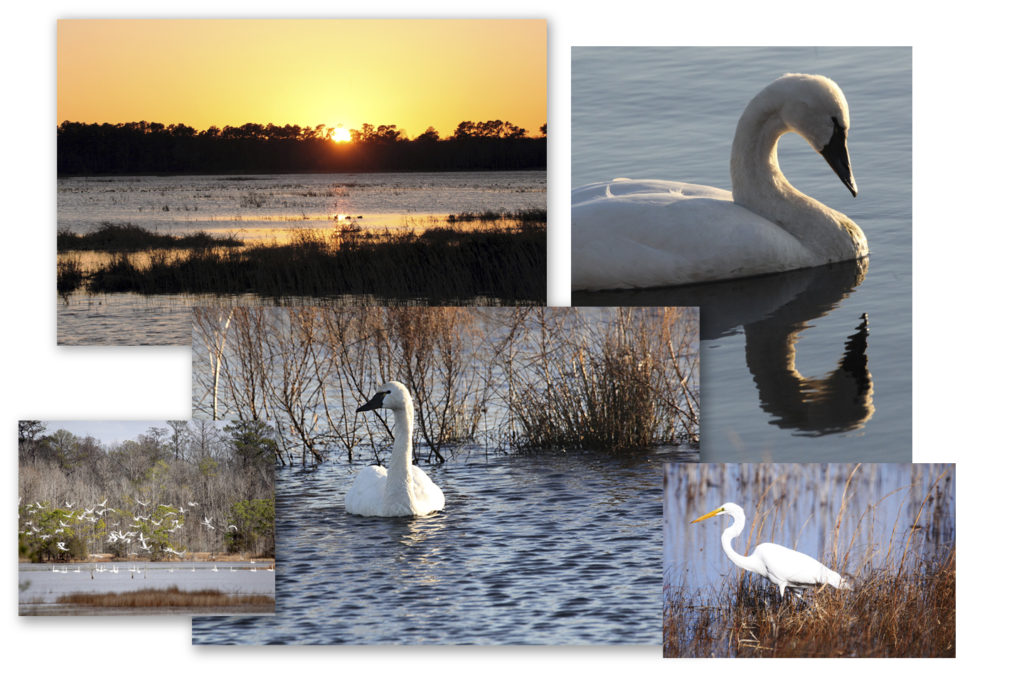
To start out our 2018, my wife Jacqui and I drove, hiked and photographed our way through the refuge primarily to photograph the Tundra swan. The 3-mile long gravel entrance road to the refuge headquarters and the 5-mile long Refuge Drive offer great views and a lot of opportunities to observe and photograph. https://www.fws.gov/refuge/mattamuskeet/
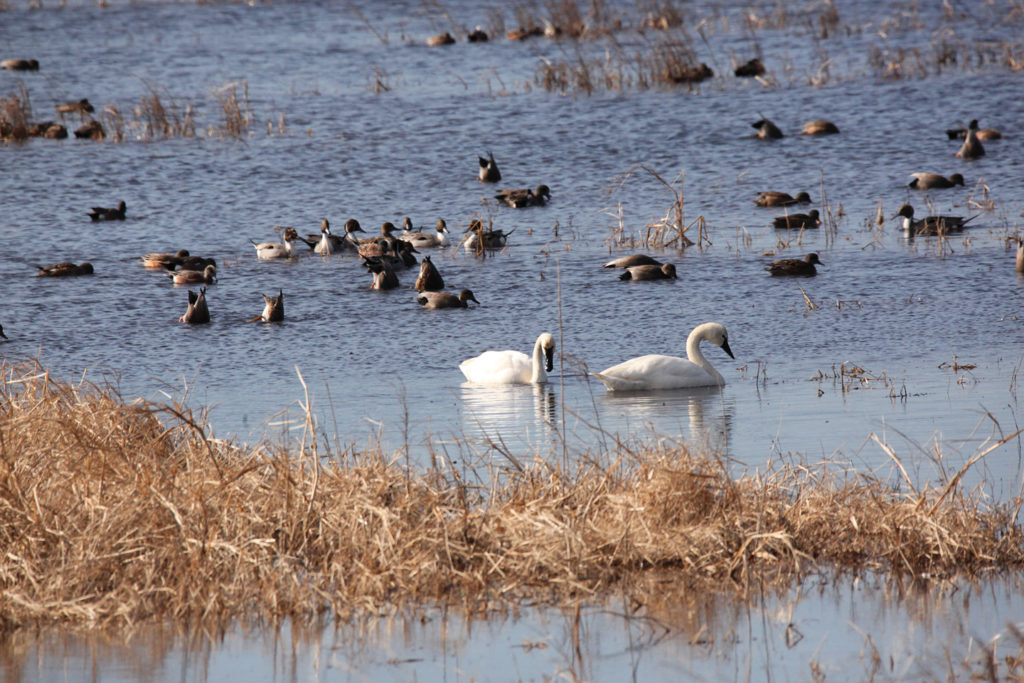
A variety of wildlife can be seen along this drive, as well as on the wide hiking trails that lead to man-made wetland impoundments that at times can be filled with hundreds of Tundras and thousands of duck in a variety species. These impoundments border the southern shore of Lake Mattamuskeet – at 40,000 acres, North Carolina’s largest natural lake.
We observed Tundra swan, pintails, shovlers, widgeon, canvasback, green-winged teal, gadwall, Canada geese, and a ton of coots.
We saw bald eagle, blue heron, great white egrets, white ibis, terns and nutrias and deer. I photographed this bald eagle and nutria right off the Refuge Drive.
Some cool Tundra swan facts: The average life span of Tundra Swan in the wild is 10 years but can live up to 20 years. Some Tundra weigh in at 24 lbs – that’s a lot of bird to get off the ground even with a 5 ft wing span.
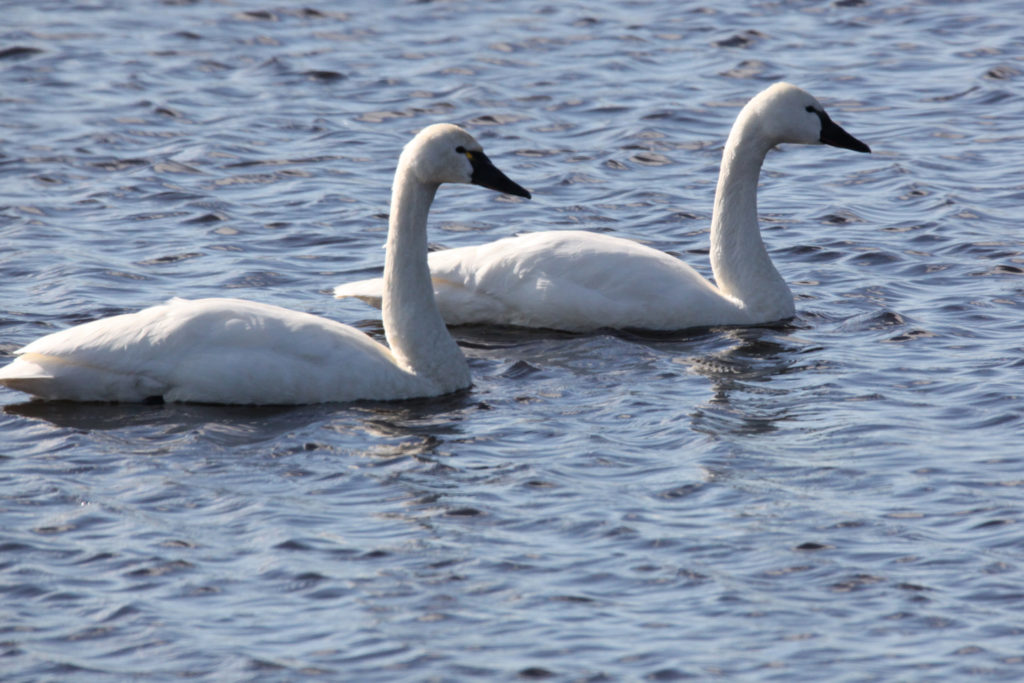
Tundra Swan pair for life, and should one partner die before the other, the surviving bird often will not mate again for some years, or even for its entire life. Young Tundra Swans remain with their parents until their arrival back on the breeding grounds the following year, and they can be identified by their dark gray necks and heads.
Tundra Swan have an Eastern and Western population and the Eastern Tundra Swan population fly some 3,725 miles round-trip between their breeding and nesting grounds on Arctic tundra and their favorite wintering grounds in North Carolina.
If you live north of our state, you still have opportunity to see Tundra swan during the winter months. While a large percent of the Eastern Tundra swan population, 65-75 thousand, migrate to northeastern North Carolina, about 25 thousand winter in Pennsylvania, Maryland, Delaware, Virginia, and New Jersey.

To see these enormous flocks lift up off the lake into the air is pretty special and the sound of that many birds is really an unforgettable experience.
I’ve been fortunate to see these birds in Montana and North Carolina and have painted a few paintings of Tundra Swan from my visits to MattamuSkeet that are available and included in my North Carolina Collection. https://markslawsonart.com/collections/



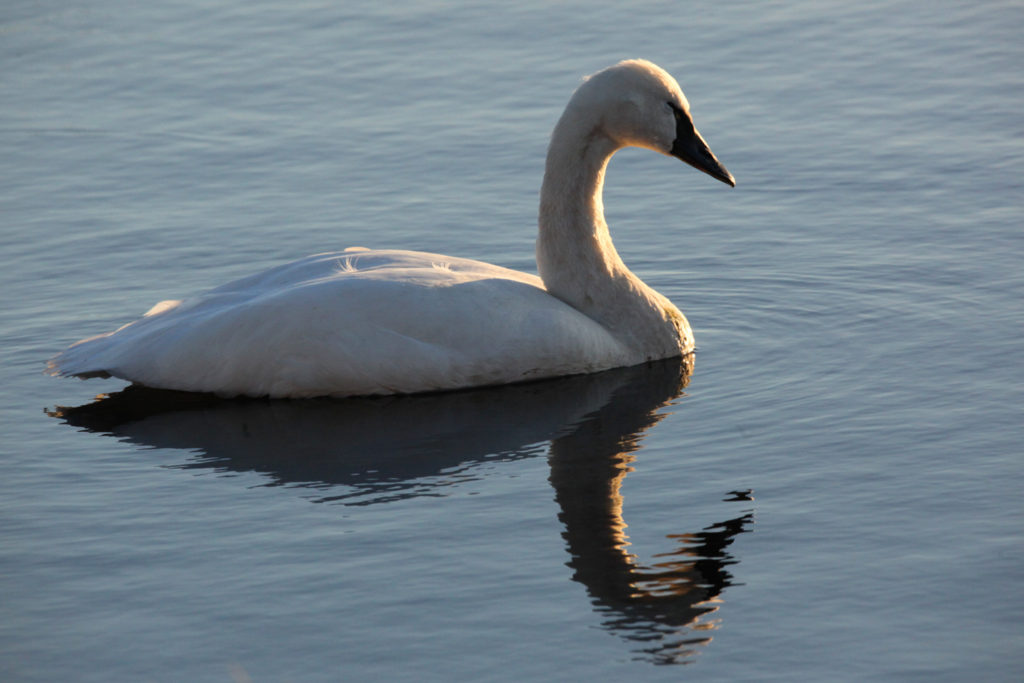

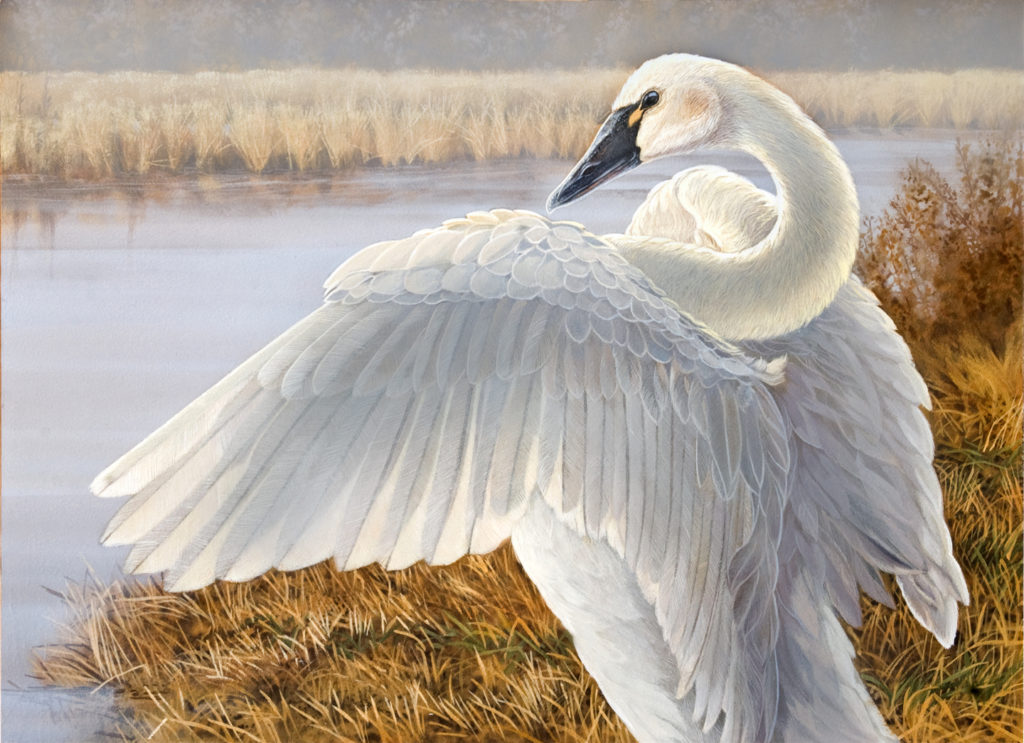

2 Comments
Jan Lienard
March 10, 2018Hello Mark,
A friend at work, Vic Cotto, suggested that I view your work, and possibly participate in some of your classes. I am enamored by your detail in the oil – as you can see by my website, I am an amateur – my sons gave me paints in 2011 and I have painted ever since. My biggest issue is that I don’t know how to draw – (no doubt I should search out some drawing lessons). The ability to take the motion and keep it alive is essential in any good painting – that turns it into art – and your work certainly portrays that aspect.
I would like to know if you have any upcoming classes – even if I were just auditing, I believe that I would learn something. In particular I am fond of the flowers/foliage and the birds….. Thanks for sharing, Jan
marks1117
April 23, 2018Jan, thank you very much for your complements and for making time to check out my site and enjoy my art! Vic is a very talented and great friend and we’ve shot a lot of photography together over the years. I apologize for my delayed response, as I had a spam issue on my site that set me back on reviewing comments. Good for you for taking advantage of your gift from your sons! I do not have a workshop on the calendar at this time but of course I’m glad to let you know when I do. The first week of June I will be presenting and demonstrating the NC Black Bear Festival in Plymouth, NC – I have not attended before but have photographed black bear in that area with one of the organizers. It’s a great area for opportunity for birds and tundra swans throughout the year as well. Thank you Jan! I will visit your website. Feel free to email me a painting in progress and I’m glad to provide some critique and comments that may help you to refine your piece. Paint on! We’ll make sure we have an opportunity to meet soon.
Mark